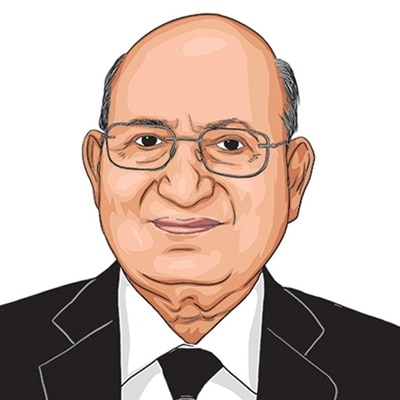Opinion GM Mustard: A win for science and the farmer
The Department of Agriculture (DoA) and ICAR need to move forward fast and provide an enabling environment to test the available seed of Hybrid DMH 11 in the current rabi season. Scientists at ICAR institutes must also be encouraged to develop new GM Mustard hybrids on a mission mode
 To meet the existing deficit in edible oils (about 55-60 per cent), India is currently importing around 13 million tonnes at a cost of Rs 1.17 lakh crore to the exchequer. (File Photo)
To meet the existing deficit in edible oils (about 55-60 per cent), India is currently importing around 13 million tonnes at a cost of Rs 1.17 lakh crore to the exchequer. (File Photo) The recent clearance by the government for the release of GM Mustard Hybrid DMH 11 — based on the recommendations of GEAC under the Ministry of Environment, Forests and Climate Change — is a bold decision in the best interest of our farmers and the nation. The decision to remove the unscientific ban on GM crops reflects the determination of the government to move towards Atmanirbhar Bharat. It also meets the aspirations of our scientific community and farmers can derive the benefits of innovative technology.
The fear and reservations expressed in some quarters are scientifically unfounded. In fact, such objections are not new. They were also expressed when we imported the dwarf miracle seeds of wheat and rice to achieve food self-sufficiency through the Green Revolution. I came up against the same concerns as the head of ICAR when Bt Cotton was being released. Science-led revolutions have given India self-respect and global recognition. We are today a major exporter of agricultural produce, including cereals and cotton, fetching more than $50 billion annually. All this is possible due to the right policy decisions by the government, the establishment of the best institutions, the building of capable human resources, taking along progressive farmers, and strengthening global partnerships.
To meet our current challenges — over-exploitation of natural resources (soil, water, biodiversity), declining factor productivity, urgency to achieve sustainable development goals, especially ending poverty and hunger, and addressing timely the adverse effects of climate change — the best option is scientific innovations and their scaling. The adoption of GM food crops is in our broader national interest. Genetically modified maize, soybean, cotton, tomato and canola are grown across the world and the area currently under GM crops is about 200 m ha. Besides India, these have been grown for many years in the US, Brazil, Argentina, Canada, Australia, Philippines, Pakistan, Bangladesh, and China.
To meet the existing deficit in edible oils (about 55-60 per cent), India is currently importing around 13 million tonnes at a cost of Rs 1.17 lakh crore to the exchequer. Interestingly, of this, 2.0-2.5 mt soybean oil and 1.0-1.5 mt canola oil is already GM. Hence, we are consuming GM oil already, besides, the 1.5 mt of GM cotton oil produced domestically. Moreover, it is scientifically proven that the consumption of refined oil does not allow any protein to enter the human system. Thus, the consumption of GM oil is completely safe from a health point of view.
A major concern of our farmers is that yields of mustard are low and have stagnated for a long time at around 1,260 kg/ha, much lower than the global average of 2,000 kg/ha. Yields of canola in Canada, China and Australia are almost three times higher than in India since they use GM hybrid technology. Mustard is a very important oilseed crop, grown in 6.0 -7.0 million hectares, mostly in Rajasthan, Haryana, Punjab and Madhya Pradesh. Thus, the government’s decision to allow the production of GM Mustard hybrids will go a long way in increasing our yields, while reducing the use of pesticides.
The Department of Agriculture (DoA) and ICAR need to move forward fast and provide an enabling environment to test the available seed of Hybrid DMH 11 in the current rabi season. This needs to happen on several farmers’ fields in the mustard belt. It must also encourage public-private partnerships to produce quality seeds to cover more area next year. Also, scientists at ICAR institutes must be encouraged to develop new GM Mustard hybrids on a mission mode. Allowing the production of GM Soybean and GM Maize going forward will also be a positive step, increasing both the productivity and profitability of these crops and doubling farmers’ income — a goal envisioned by the Prime Minister.
It is interesting that Australia has recently released herbicide-tolerant GM Indian mustard, using similar technology, whereas they do not grow Indian mustard. Obviously, they aim to meet the growing demand of mustard oil in South Asian countries.
The writer is former director general, ICAR and secretary, DARE and former president, Indian Science Congress






